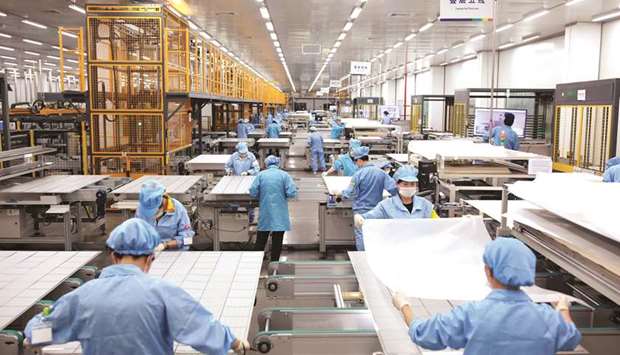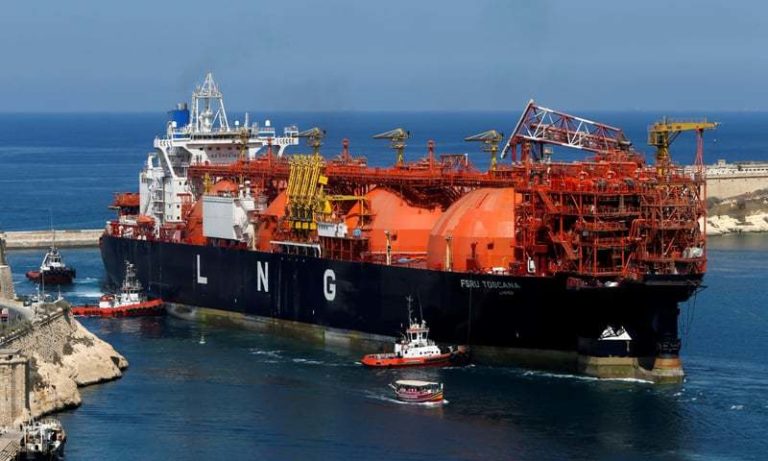March 2019
This year’s fourth edition of the Delphi Economic Forum featured several days’ worth of sessions, addresses, and other activities, and much of it focused on both the challenges and the opportunities spawned by rapid technological change. Numerous discussions also honed in on ways in which states and other actors can help ensure that growth is more inclusive in this coming new age, a challenge which was at the heart of this year’s Forum. Another recurring theme at Delphi this year was concern over the outcome of the upcoming European parliamentary elections, with the rise of Euro-sceptic and nationalist tides threatening to re-shape the Union’s political landscape. In addition, considerable attention was paid to how the Eastern Mediterranean is being transformed, one country at a time, into a major hydrocarbon-producing region, and what role(s) Greece should play in this continuing process.

Greek President Prokopios Pavlopoulos
Greek President Prokopios Pavlopoulos used his opening address on Thursday to warn that while human civilisation has benefited mightily from technology, the coming period threatens enormous socioeconomic dislocation unless effective solutions can be found.
Around the world, experts agree that developments in key fields like wireless communications, batteries, robotics, and artificial intelligence are converging as they mature, opening the way for technology to become even more ubiquitous than it already is – and decisively so. Simply put, the new machines will be so capable that they will be able to replace human input across broad swathes of the global economy, potentially leading to mass unemployment and a long list of related social and economic challenges.
“Modern man’s relationship with technology and its achievements are fraught with contradictions, even more so in recent years,” Pavlopoulos said. “These are not contrasts, which could be compromised through a dialectical synthesis, but actual contradictions” attributable to both “the justified pride the creator takes in his creations” and the “fear [which], almost subconsciously, fuels the composite emotion that results from the mixture of the paradox and the absurd,” he added. “This mixture is, ultimately, the awe felt by the creator when his creations begin to operate outside the scope of his designs and expectations. It is even more acutely felt when the creator thinks that he may be about to be surpassed or displaced by his creations.”
Pavlopoulos also noted that both the causes and the ramifications of these contradictions help explain why “modern man” has so much trouble synthesising individual elements of technology with the objectivity and competence required by science. This weakness is particularly costly when it comes to technological unemployment, he said, at least partly because job losses are too often accepted as a given in such matters. It also increases the insecurity and marginalisation of those who have lost their livelihoods to technology, giving them little reason to hope for a better future.
The Greek president took issue with the bleak outlook described above, arguing that technological unemployment does not constitute an ineluctable side-effect of technological progress. “Nothing prevents us from using the new means of technology in order to replace, to a great extent, the jobs that have gone with new ones,” he said. “In this way, each one of us would be enabled to contribute to the society to which he belongs.”
Pavlopoulos also noted that representative democracy offers institutional and political defences alike which might provide a degree of resistance, helping to prevent, contain, or compensate for potential incursions by increasingly pervasive technologies. The president also warned, however, that in order to take full advantage of these defences, “we must take the responsibility of our actions; otherwise, the next generations will pay a hefty price they do not deserve.”

Former EU Commission President Jose Manuel Barroso
Former European Commission President Jose Manuel Barroso, who spoke on Sunday, shared some of his experiences from a previous episode of EU insecurity, namely the Greek sovereign debt crisis that marked the last five years his 2004-2014 tenure.
At the height of the crisis, as it began to emerge how much austerity would be imposed on Greece in return for a bailout by the EC, the European Central Bank, and the International Monetary Fund, he recalled, “Greece came very close to Grexit.”
Several factors made the situation worse, Barroso added, including the fact that financial instruments appropriate for a crisis of such magnitude had not yet been created.
He also acknowledged that both sides had committed missteps during the bailout negotiations. When large numbers of Greeks joined raucous street protests to condemn the tough terms laid down in the bailout programmes, Barroso said, the resulting scenes did not inspire confidence in European governments.
“There were mistakes from the Greek side,” he told his audience, “but also from the European [side] too. Some countries should have been more generous and shown greater solidarity.”
As for today’s challenges, Barroso said he had faith in Europe’s capabilities.
“Yes, we have serious problems to deal with – Brexit, illegal immigration, populism and nationalism, and the fact that Europe is behind in the digital revolution,” he acknowledged. “But we also have the resources and means to overcome them.”
When asked whether he believes that Greece can and should reduce its primary surplus and its tax burden, he was diplomatic, noting that this was a very sensitive moment because the country will hold elections this year. “I think the first thing that needs to be done by the government that will arise from the elections is to show its commitment to reforms,” he said.

European Commissioner for Migration, Home Affairs, and Citizenship Dimitris Avramopoulos
European Commissioner for Migration, Home Affairs, and Citizenship Dimitris Avramopoulos warned of mounting problems if steps were not taken to address the reasons for rising populism and nationalism. “Europe is suffering an existential crisis,” he said during in a Q&A session on Saturday, noting that the surge in such sentiments was particularly dangerous with EU-wide elections taking place in May. Avramopoulos’ concerns echoed those of many participants and attendees, namely that too many European citizens feel let down by the EU and are searching for other options, at least some of which are antithetical to the entire European project.
Energy Geopolitics and the Role of Greece
Doha-based Energy and Environment Holding CEO Roudi Baroudi acknowledged the same problems but struck a much more optimistic tone. He said the solution to Europe’s problems was not less integration, but smarter integration designed to meet the interests of and families and communities, not just companies and governments. He also linked this perspective to the very origins of the European project, to the goal of closer integration with neighbouring regions, and to the very latest developments in the energy revolution that promises to rejuvenate the EU.

Former EU Commission President Jose Manuel Barroso, left, with Energy and Environment Holding CEO Roudi Baroudi
Baroudi, who has advised companies and governments on three continents during a career spanning more than 40 years, also has helped shape EU policy on energy and non-energy matters alike. The broad net cast by his remarks merits substantial reproduction here.
“For almost 70 years now, ever since the Schuman Declaration of 1950, most of Europe has been moving toward greater integration,” Baroudi said during a session titled “Energy Geopolitics and the Role of Greece” on Saturday. “Decades later, following the 1995 Barcelona Declaration, that vision expanded, specifically by way of the Euro-Mediterranean Partnership and its most conspicuous result, the Union for the Mediterranean.”
“These goals can never be fully realized unless we accept the fact that integration must be implemented in such a way as to not only promote geopolitical stability, expanded trade, and faster economic growth, but also to increase social equality, strengthen social cohesion, and ensure greater harmony within and between different sectors of society, he added. “Indeed, many of the problems facing the EU today stem from a failure to ensure that political and security partnerships between governments and militaries would come part and parcel with direct benefits for every-day citizens from all walks of life.”
“The consequences of this failure have been particularly troublesome for several key members of the Euro-Med family,” Baroudi noted. “Far too often, we hear the setbacks of the past decade described in broad strokes: massive government debt, troubled banking sectors, ‘haircuts’ for investors, etc. Those are all valid stories, but the real tragedies are the personal ones involving jobs lost, families scattered, and dignity under assault. These are the indicators that have to change if we are to make good on the European dream, and if we are serious about inclusiveness, the Euro-Med region is actually a great place to start.”
The industry veteran also endorsed President Pavlopoulos’ observations about technological unemployment, stressing the need for a holistic approach that seeks to mitigate the unintended consequences often wrought by otherwise advantageous developments. “Human civilizations have always struggled with how to balance these factors, and a similar approach must apply to oil and gas development,” Baroudi told the audience.
“On both sides of the Mediterranean, this part of the world has known more than its share of headaches and heartaches in recent years, including rows over immigration policy, tight debt markets, and weak investor confidence,” he added. “What a feat it would be, then, if the countries of this same region set an example for the rest of the world by overcoming their differences to establish a common area of peace, prosperity, and stability.”
And as a centrepiece of both European and Mediterranean history, geography, and civilization,” he noted, “no country has a more important role to play in this process than Greece does.”
Baroudi then turned to the issue of how the Mediterranean’s emergence as a major energy producing region could help restore faith in the European dream.
“It is true that after the past 15 years of political drift, some people have doubts about the Euro-Med ideals. For many more, however, the experience has only demonstrated the need to revive the spirit of Barcelona – and, this time, to finish the job. If we can do that, and if all of the countries involved agree to be bound by the United Nations Charter and other international laws and regulations, the tools are available to carve out a happier future for all of our peoples,” he said.
“Ladies and gentlemen, so are the resources. Not very far from here – from Crete and Cyprus to Egypt and the entire Levantine Basin – exploration has uncovered numerous undersea deposits of oil and gas. With so many resources buried under the Mediterranean seabed, right on the doorstep of the world’s single largest energy market, the conditions could not be better. In fact, just yesterday ExxonMobil confirmed a massive find off Cyprus.”

Map showing offshore blocks, including ExxonMobil’s, in Cypriot waters of the Eastern Mediterranean
“So long as everyone abides by the rules, there is significant scope for dialogue, not to mention the promise of enormous potential rewards for actual cooperation. Each country that becomes an energy producer – and even non-producers that benefit from lower prices and greater security of supply – will have greater capacity to invest in hospitals, roads, schools, and other powerful contributors to the healthier societies,” Baroudi said. “And each new form of cooperation will bind neighbours that much closer together, pooling their resources and increasing their ability to work together … Again, as one of the victims of the global economic slowdown, Greece has unquestionable credentials to be among those leading the recovery.”
Returning to the theme of balance, he also expressed confidence in the modern energy industry’s ability and willingness to measure and manage the risks associated with oil and gas.
“We all know that the extraction and use of hydrocarbons poses threats to the environment, not just in terms of climate change, but also due to the danger of spills that directly affect ecosystems and the animals and plants that inhabit them,” he said. “What we must never forget, though, is that today the energy industry is better-equipped than ever to prevent mishaps – and to contain or mitigate the damage when an accident occurs. We also have global standards, including the recommendations of the COP 21 and COP 24 climate summits, and the governments in question just need to be muscular about implementing and enforcing these rules. Greece’s role will no doubt include continued leadership on this score, too.”
“All of these opportunities are real,” Baroudi concluded, “and they are will within the grasp of the peoples involved. What is needed is greater awareness of the need for understanding and cooperation, and of the oil and gas industry’s ever-growing capacity to help ensure sustainable and inclusive development across the Euro-Med region.”

Map depicting key areas for exploration off Greece’s southwest coast
Shifting Forces in the Regional Energy Ecosystem
ExxonMobil’s Vice President for Europe, Russia and the Caspian, Tristan Aspray, spoke on Saturday during a session dedicated to “Shifting Forces in the Regional Energy Ecosystem”. Reiterating his satisfaction at his company’s recent discovery of huge natural gas deposits off Cyprus, he outlined the prospects for Southeastern Europe’s emerging as a key source of gas supply to promote energy security across the continent.

ExxonMobil VP for Europe, Russia, and the Caspian Tristan Aspray
While ExxonMobil’s find is the biggest so far, Aspray noted that other companies also have located significant deposits in Cypriot waters, and nearby discoveries off Romania and Egypt were similarly encouraging for the East Med region as a whole. With exploration and investigation still in progress, the full extent of Greece’s offshore hydrocarbon resources remains uncertain, but Aspray concluded by saying that already, “all of these regions have the potential to operate as major alternative energy sources in Europe.”

Greek Minister of Environment, Energy, and Climate Change George Stathakis
Speaking on the same panel as Aspray, Greek Minister of Environment, Energy and Climate Change George Stathakis described his country’s efforts to regulate energy markets in a way that helps achieve climate change targets stretching as far as the year 2030. He said Greece’s strategy included multiple approaches, including conservation and an increase in the amount of energy produced from renewables to 65%. He also acknowledged, however, that progress has been slow on some fronts. “It is clear that things are falling short with respect to energy saving,” Stathakis explained. “Today, the reduction in consumption is limited to 1.5% per year.”
Conclusions
The foregoing is a small but representative slice of the views, insights, and analyses provided by the dozens of speakers who attended this year’s Delphi Economic Forum. Whatever their individual topics or perspectives, most participants were mindful of the numerous serious challenges facing the European Union and its citizens, but they were also confident that none of these problems was insoluble. In particular, there was an unofficial consensus that, like other key components of the global economic system, the EU needs to become more sensitive to the fact that macro-policies can spawn micro-crises that then mutate into mass emergencies. Only by being more responsive to the short-term needs of its regions, it seems, can Brussels ensure the long-term success of the entire Union.
As more than one session heard, Europe has the resources – institutional, financial, intellectual, natural, etc. – required to regain public trust, restore faith in the European project, and reinvigorate even its most economically distressed areas. The questions are whether the EU can muster those resources, how soon it can do so, and whether this will be enough to hold things together until better economic times return.
The need for a new European direction is manifest. At a time when much of the world is being destabilized by bigots and demagogues, the ideals of the EU should show the way to a more harmonious future in which fears and rivalries are replaced by genuine partnerships and inter-dependence. Europe cannot play its rightful role on the world stage, however, at least not to the full, unless and until it effectively addresses disparity and other socioeconomic ailments at home.

















